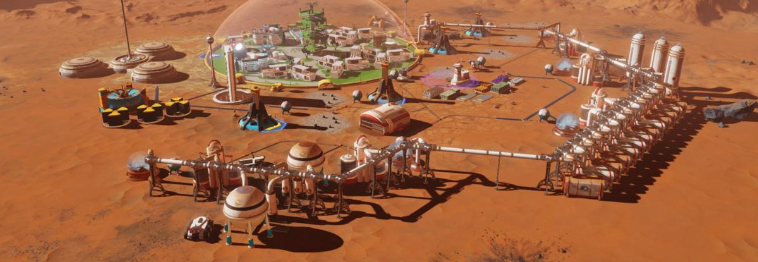The dream of colonizing Mars is no longer confined to the pages of science fiction. However, one of the most significant challenges to human life on the Red Planet is the exposure to solar storms and radiation. These cosmic threats could jeopardize the very existence of Martian settlers. This blog delves into essential strategies to protect humans from the perils of Mars, addressing common questions and providing insights into how we can make life on Mars sustainable and safe.
The Threat of Solar Storms and Radiation on Mars
Mars, unlike Earth, lacks a strong magnetic field and a thick atmosphere. This makes the planet particularly vulnerable to solar storms and cosmic radiation. These high-energy particles can cause severe health issues, ranging from radiation sickness to an increased risk of cancer, and can even damage electronic equipment vital for survival.
Surviving Mars ?
1. What are solar storms, and why are they dangerous on Mars?
Solar storms are bursts of solar wind and magnetic fields rising above the sun’s atmosphere. On Mars, these storms can be deadly due to the lack of a magnetic shield. They can cause acute radiation exposure, damaging human cells and DNA, and can also disrupt communication and navigation systems.
2. How does Mars’ atmosphere affect radiation exposure?
Mars‘ atmosphere is about 100 times thinner than Earth’s, providing minimal protection against cosmic rays and solar radiation. This thin atmosphere allows high-energy particles to reach the planet’s surface, posing a significant threat to humans and equipment.
3. What technologies can protect humans from radiation on Mars?
Several innovative technologies are in development to safeguard future Martian settlers. These include advanced radiation shielding materials, underground habitats, and magnetic field generators. Each of these technologies plays a critical role in creating a safe living environment on Mars.
4. Can we use Mars’ natural resources to build protective habitats?
Yes, one of the promising strategies involves using Martian regolith (soil) to construct habitats. Regolith can be used to build thick walls or cover habitats, providing a natural shield against radiation. Additionally, ice deposits on Mars could be utilized to create water shields, which are effective at absorbing radiation.
5. How will solar storms impact daily life on Mars?
Solar storms could force settlers to seek shelter during high radiation events, disrupting daily activities. This would require the development of early warning systems and safe shelters that can be quickly accessed.
Strategies for Protecting Life on Mars
- Underground Habitats: Building habitats below the Martian surface offers natural protection against radiation. These underground structures could be created using Martian regolith, providing an effective barrier against cosmic rays.
- Radiation Shielding Materials: Advanced materials, such as hydrogen-rich polymers and polyethylene, are being developed to create lightweight, yet effective, radiation shields. These materials can be used in spacesuits, habitat walls, and vehicles.
- Magnetic Field Generators: To mimic Earth’s protective magnetic field, scientists are exploring the use of magnetic field generators. These devices could create localized magnetic fields around habitats, deflecting harmful solar particles.
- Water Shields: Water is an excellent absorber of radiation. By surrounding habitats or specific areas with water shields, settlers could significantly reduce their exposure to harmful particles.
- Early Warning Systems: Implementing robust solar storm monitoring and early warning systems will be crucial. These systems would give settlers time to take shelter, reducing the risk of radiation exposure during solar storms.
- Bioengineering Solutions: Advances in bioengineering may allow for the development of plants and microbes that can absorb or neutralize radiation. These organisms could be integrated into the Martian ecosystem, providing an additional layer of protection.
- Spacesuit Innovations: Next-generation spacesuits are being designed with integrated radiation shielding. These suits would allow explorers to venture outside their habitats with reduced risk during periods of heightened solar activity.
Conclusion
As humanity prepares to take its first steps on Mars, protecting settlers from the dangers of solar storms and radiation is paramount. The strategies discussed in this blog offer a roadmap to creating a safe and sustainable environment on the Red Planet. From underground habitats to advanced radiation shields, these innovations will be crucial in turning the dream of living on Mars into a reality.
Mars may be a world of opportunities, but it also presents challenges that must be met with cutting-edge science and technology. As we continue to explore this new frontier, the focus on safety and sustainability will ensure that human life can thrive in the most hostile environments.








